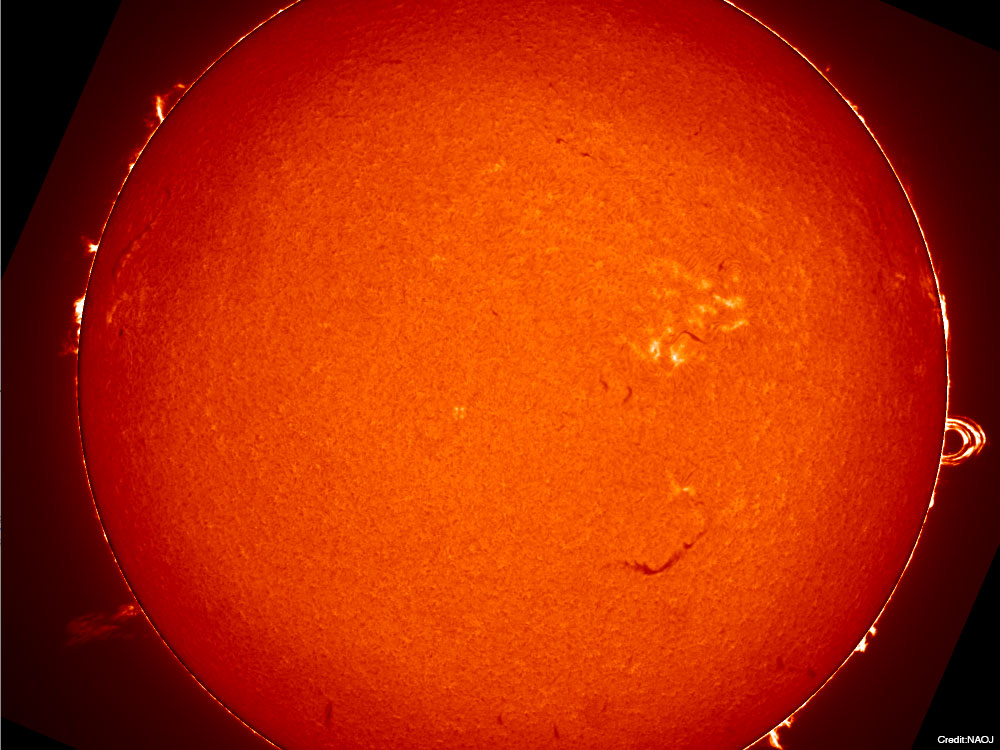What is the Solar Flare Telescope?
Located in the western part of Mitaka Campus, the Solar Flare Telescope is the Solar Science Observatory’s prime ground-based instrument for solar observation. The 15-cm telescopes and 20-cm telescopes were installed when we started observation in 1990. We measured solar magnetic field distributions, gas flows in the solar atmosphere, changes in the shape of sunspots, and also observed solar flares in the hydrogen H-alpha line. In 2007, we started to reconfigure the Solar Flare Telescope to use a 15-cm telescope and two 12.5-cm telescopes. Since 2010, we have observed the full solar disk. Currently, we use three telescopes to observe the full-disk magnetic field of the solar chromosphere through infrared polarization observations; the full-disk image of the solar chromosphere through H-alpha line observations; the full-disk image of the photosphere through G-band and continuum observations; and the full-disk image of the chromosphere through Ca K line observations.

Research
Since 2010, leading edge observational instruments have been installed, and the telescope has been precisely measuring the magnetic field of the full solar disk using infrared polarization observations. With these observations, we are studying the driving mechanisms of solar magnetic activity. In addition, the telescope monitors the long-term change in solar activity by observing visible light emissions from the Sun’s photosphere and H-alpha line emissions from the chromosphere over the full solar disk.
Specifications
| Location | Mitaka Campus (Osawa, Mitaka, Tokyo, JAPAN) |
|---|---|
| Prime manufacturer | Nikon Corporation |
| Main observation instruments | T1: H-alpha full-disk imager (aperture 12.5 centimeters and focal length 225 centimeters) T2: Infrared spectropolarimeter (aperture 15 centimeters and focal length 180 centimeters) T4: Continuum, G-band Full-Disk and CaK Full-Disk Imager (aperture 12.5 centimeters and focal length 225 centimeters) (Note 1) T1 and T4 are used for observation by baffling a 15 centimeters lens to 12.5 centimeters. |
History
| 1990 | Observation started. |
|---|---|
| 2010 | Infrared spectropolarimeter constructed and started observation. |
| 2011 | H-alpha full-disk image observation started. |
| 2012 | G-band and continuum full-disk image observation started. |
| 2015 | Ca K full-disk image observation started. |
